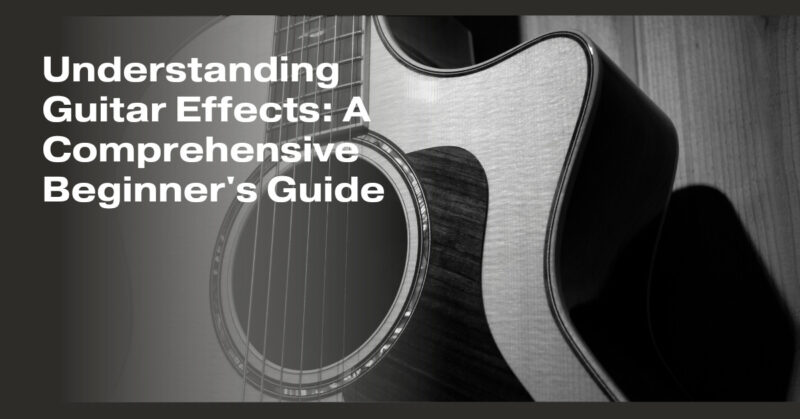Understanding guitar effects is essential for guitarists who want to shape their sound and create unique sonic textures. Whether you’re playing rock, blues, jazz, or any other genre, effects pedals can elevate your playing and help you achieve the desired tone. Here’s a comprehensive beginner’s guide to guitar effects:
1. What Are Guitar Effects?
- Guitar effects, also known as stompboxes or pedals, are electronic devices that alter or enhance the sound of an electric guitar. They are typically housed in compact enclosures that can be easily activated or deactivated with the foot.
2. Types of Guitar Effects:
- There are numerous types of guitar effects, each with its distinct purpose and sonic characteristics. Here are some common types:
- Distortion: Adds grit and overdrive to your tone.
- Overdrive: Produces a warm, saturated sound.
- Fuzz: Creates a fuzzy and aggressive distortion.
- Delay: Adds echo and repeats to your notes.
- Reverb: Simulates the sound of various room environments.
- Chorus: Modifies your sound to create a shimmering, doubled effect.
- Flanger: Produces a jet-like, swirling sound.
- Phaser: Creates a sweeping, pulsating effect.
- Wah-Wah: Modifies the guitar’s tone with a foot-controlled pedal.
- Tremolo: Adds a pulsing volume effect.
- Octave: Transposes your notes up or down an octave.
- Looper: Records and plays back guitar parts for layering.
- Compressor: Evens out the dynamic range of your playing.
- The order in which you place these effects in your signal chain can significantly impact your sound.
3. Building Your Signal Chain:
- Your signal chain is the order in which you connect your pedals. A typical signal chain might start with a tuner, followed by distortion or overdrive, modulation effects (like chorus or flanger), delay and reverb, and end with a volume pedal or tuner.
4. Powering Your Pedals:
- Most effects pedals require a power source. You can use a dedicated power supply, batteries, or a pedalboard power solution to provide the required voltage to your pedals.
5. Experimentation:
- One of the best ways to learn about guitar effects is through experimentation. Try different pedal combinations and settings to discover your unique sound.
6. Presets and Multi-Effects Units:
- Some guitarists prefer the convenience of multi-effects units or digital processors that offer preset settings and a wide variety of effects in one device.
7. Maintenance:
- Keep your pedals and connections clean to avoid noise and signal loss. Check your batteries or power supply regularly.
8. Expression Pedals:
- Some effects, like wah-wah and volume pedals, are controlled with an expression pedal. Learning to use them effectively can add dynamics to your playing.
9. Famous Guitarists and Their Effects:
- Study how famous guitarists use effects to shape their signature tones. For example, Jimi Hendrix’s use of the wah-wah pedal or The Edge’s extensive use of delay and reverb.
10. Use Effects Wisely: – Effects should enhance your playing, not mask it. Always focus on your core guitar skills and use effects as tools to express your musical ideas.
Learning about guitar effects is an exciting journey that can open up a world of sonic possibilities. By understanding how different effects work and experimenting with them, you can develop your unique sound and style as a guitarist.


